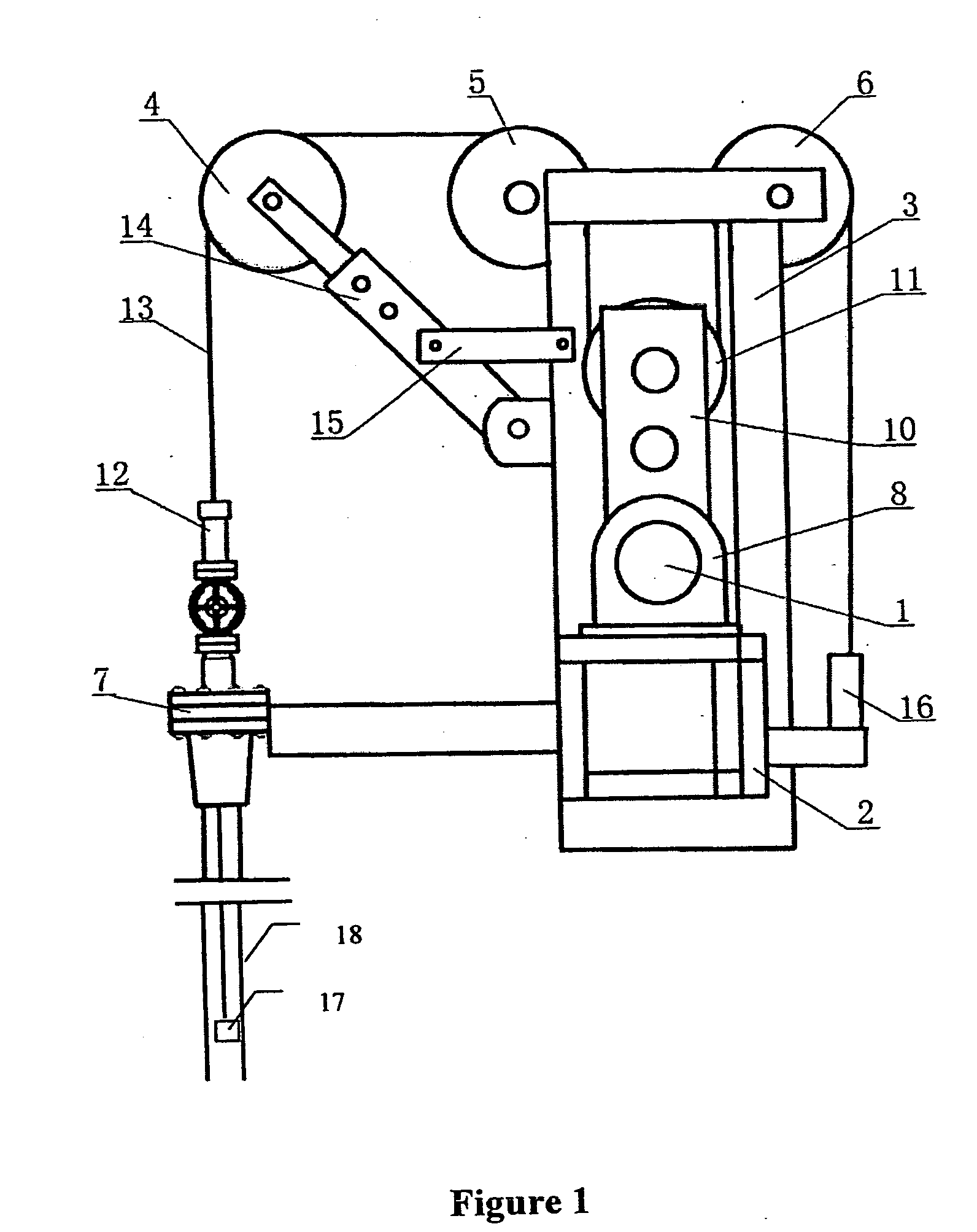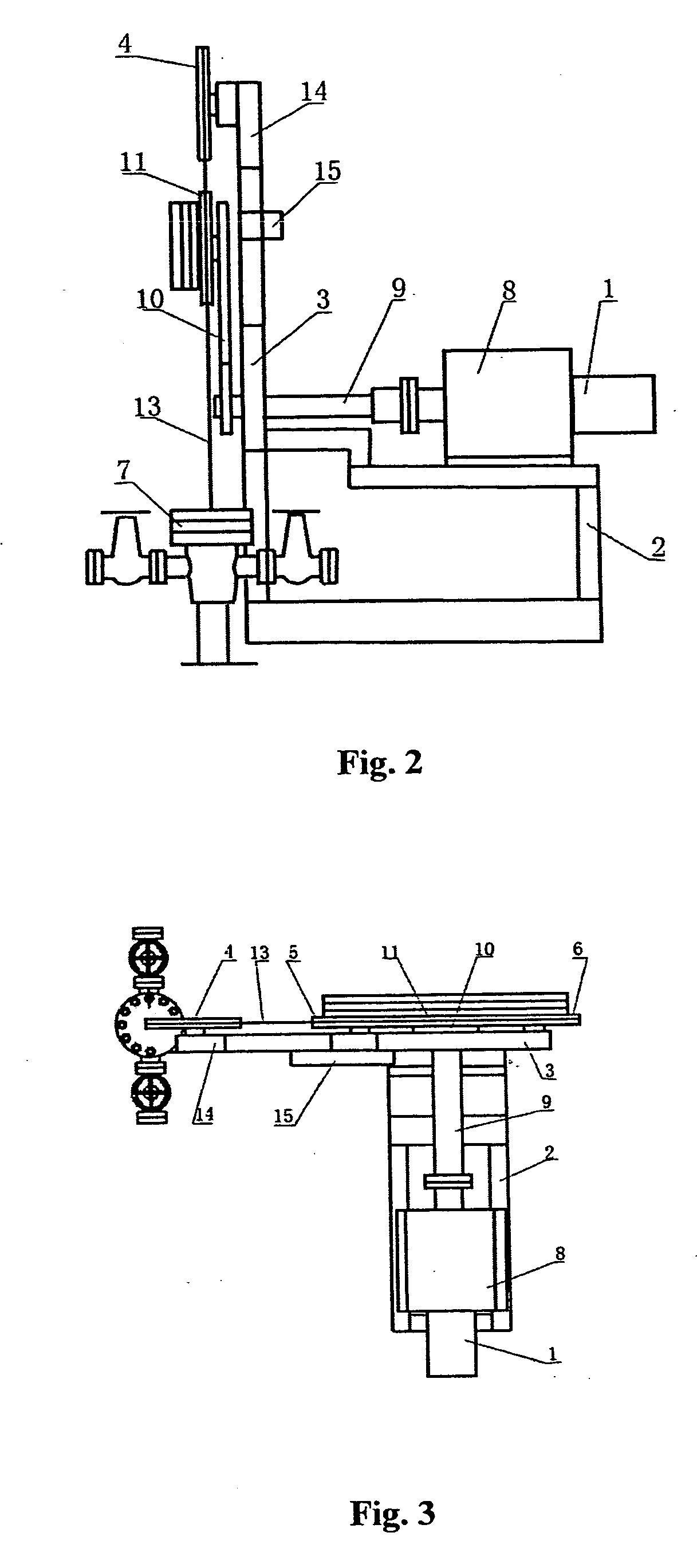Pumping system
a pumping system and pumping technology, applied in the field of lift or pumping system, can solve the problems of low effective load factor level, high power consumption, and inferior movement performance, and achieve the effects of reducing power consumption, improving pump movement performance, and reducing the weight of the pumping system
- Summary
- Abstract
- Description
- Claims
- Application Information
AI Technical Summary
Benefits of technology
Problems solved by technology
Method used
Image
Examples
Embodiment Construction
[0011] In the drawings and the following Description, the reference numerals identify the following elements of a pumping system in accordance with this invention: 1—electric motor; 2—pump basement or base unit; 3—support bracket; 4—fixed pulley; 5—fixed pulley; 6—fixed pulley; 7—flange; 8—speed reducer; 9—output shaft; 10—crank; 11—movable pulley; 12—top pump; 13—driving element or cable; 14—positioning bracket of positioning wheel; 15—brace; 16—tester; 17—bottom pumping unit; 18—oil tubing.
[0012] As shown in FIG. 1 in conjunction with FIGS. 2 and 3, the single-crank, double-stroke, flexible-cable pumping system of this invention comprises an electric motor 1, a pump basement or base unit 2, and a flange 7 attached or connected to the basement 2. The flange 7 is located between top and bottom flanges (not numbered) of a wellhead, and fixed to the wellhead for example with screws. A generally L-shaped support bracket 3 is vertically fixed onto a connection end of the basement 2 and...
PUM
 Login to View More
Login to View More Abstract
Description
Claims
Application Information
 Login to View More
Login to View More - R&D
- Intellectual Property
- Life Sciences
- Materials
- Tech Scout
- Unparalleled Data Quality
- Higher Quality Content
- 60% Fewer Hallucinations
Browse by: Latest US Patents, China's latest patents, Technical Efficacy Thesaurus, Application Domain, Technology Topic, Popular Technical Reports.
© 2025 PatSnap. All rights reserved.Legal|Privacy policy|Modern Slavery Act Transparency Statement|Sitemap|About US| Contact US: help@patsnap.com



